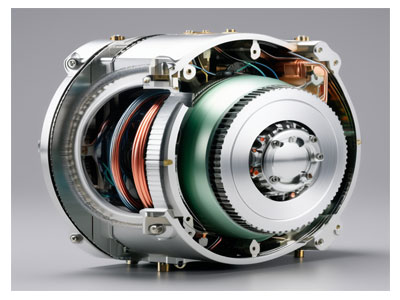Key Takeaway
Start by checking the supply voltage to ensure it’s correct, as low voltage can cause performance issues. Then, verify that the servo amplifier’s current rating matches your application needs.
Next, inspect the servo controller settings and wiring. Look for any misconnections, loose parts, or damaged cables. Tighten connections and replace faulty wiring. Following these steps will help you identify and resolve common issues, ensuring your servo drive operates efficiently and smoothly.
Common Servo Drive Problems
Servo drives can face a variety of issues, many of which are easy to identify but harder to resolve without the right knowledge. One of the most common problems is overheating. When a drive operates for long periods or in an environment without adequate ventilation, it can overheat, causing errors or complete shutdowns.
Another frequent issue is voltage fluctuations. If the servo drive experiences inconsistent power supply, it may lead to poor performance or even damage the internal components. Similarly, electrical noise can cause interference in the signal, leading to erratic behavior of the motor.

Diagnostic Tools for Servo Drives"
Having the right tools is essential for accurately diagnosing problems with a servo drive. Multimeters are commonly used to check voltage, current, and resistance levels, ensuring that the drive is receiving the proper power supply and that there are no internal electrical issues.
Another critical tool is the oscilloscope, which can help detect electrical noise or signal interference. This is particularly important in troubleshooting drives that control high-precision equipment, where even slight disturbances in the signal can lead to performance issues.
Diagnostic software provided by the manufacturer is often the most powerful tool at your disposal. This software allows engineers to connect to the servo drive, read fault codes, and monitor real-time performance data. Understanding the error codes generated by the drive can significantly speed up the troubleshooting process.
Step-by-Step Troubleshooting Guide
When a servo drive encounters an issue, following a systematic troubleshooting process ensures you cover all bases without overlooking potential causes. Start by checking for error codes using the diagnostic software. These codes often provide a direct clue to what’s wrong, whether it’s overheating, communication failure, or voltage issues.
Next, inspect the physical condition of the drive. Look for signs of overheating, such as burnt smells or discoloration, and ensure that all wiring is intact and properly connected. Loose cables or damaged connectors can cause intermittent issues.
If no physical issues are detected, proceed to check the power supply. Use a multimeter to ensure the voltage is stable and within the drive’s recommended range. If voltage fluctuations are detected, it could be the root cause of the problem.
Finally, if the drive is still not functioning correctly, use an oscilloscope to monitor for electrical noise or signal interference. Once all these checks are completed, resetting the drive or replacing worn-out components may resolve the issue.
Preventive Maintenance for Servo Drives
To minimize the risk of breakdowns and extend the lifespan of your servo drive, regular preventive maintenance is essential. One of the simplest but most effective practices is to keep the drive clean. Dust and debris can accumulate inside the housing, obstructing ventilation and leading to overheating.
Another key maintenance task is ensuring that the drive’s cooling fans are working properly. A malfunctioning fan can quickly cause the drive to overheat, reducing its operational efficiency.
Periodic inspection of electrical connections is also critical. Over time, wires and connectors can loosen or degrade, which may lead to performance issues. By regularly checking these components, you can prevent minor problems from turning into major faults.
Finally, always ensure that the environment around the servo drive is well-controlled, with stable temperatures and minimal exposure to dust, moisture, or corrosive materials.
When to Call a Professional Technician
While many servo drive issues can be resolved with basic troubleshooting, there are times when calling a professional technician is the best course of action. If the drive consistently shows the same error codes despite troubleshooting, it could indicate a deeper issue with the internal circuitry.
Also, if you notice physical damage to the drive, such as burnt components or exposed wires, it’s best to let an expert handle the repair. Attempting to fix these issues without the necessary expertise could lead to further damage or even safety hazards.
In cases where the drive is part of a complex system, and you’re unsure how the malfunction affects other components, calling in a technician ensures that you avoid costly mistakes. They can also perform advanced diagnostics and tests that go beyond the tools available to most on-site engineers.
Conclusion
By understanding how to troubleshoot and maintain a servo drive, engineers can greatly reduce the risk of unexpected failures and costly downtime. Start by identifying common issues, use diagnostic tools effectively, and follow a systematic approach to troubleshooting. Regular preventive maintenance goes a long way in keeping your servo drives running smoothly and extending their lifespan.
When in doubt, don’t hesitate to call a professional technician for assistance, especially when dealing with complex systems or persistent issues. With the right approach, you can ensure optimal performance and reliability from your servo drives, keeping your operations running efficiently for years to come.
